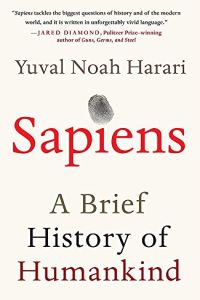
Recommendation
Yuval Noah Harari’s 400-page history of mankind is a timely meditation on the nature of Homo sapiens’ fickle path: a history not made by great leaders, determinism, guns, germs or steel, but by unexpected nuances of existence. Harari concludes that Homo sapiens prevailed by happenstance, a capacity for language and socialization, curiosity, mercantile fervor and technological prowess – which may yet destroy everything. Harari’s perspective moves among the telescope, microscope and stethoscope, hailing the synchronicities of capitalism, religion and technology. He tracks happiness as a measuring stick of progress. Harari is uneasy about humanity as the intelligent designer of a new “superhuman” – a cyborgian, a machine whose inorganic longings may not include happiness. While always neutral on matters of personal belief, getAbstract recommends this roiling, off-the-beaten path tour de force to readers with patience and open minds, even those who might disagree along the way.
Summary
About the Author
Oxford-educated historian Yuval Noah Harari teaches at the Hebrew University of Jerusalem.
By the same author
What Does the AI Revolution Mean for Our Future?
How will AI impact our immediate and near future? Can the technology be controlled, and does it have agency? Watch DeepMind co-founder Mustafa Suleyman and Yuval Noah Harari debate these questions, with The Economist editor-in-chief Zanny Minton-Beddoes.









Comment on this summary